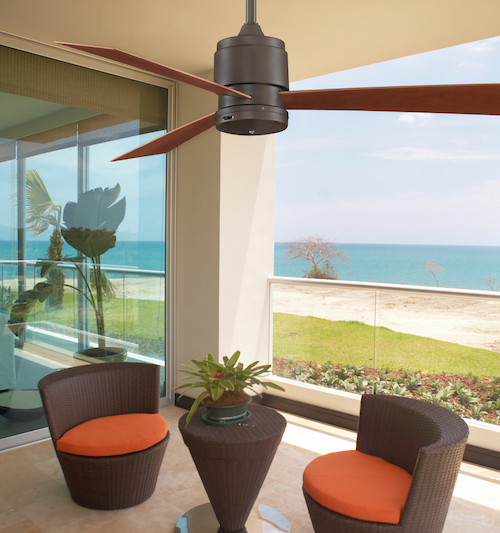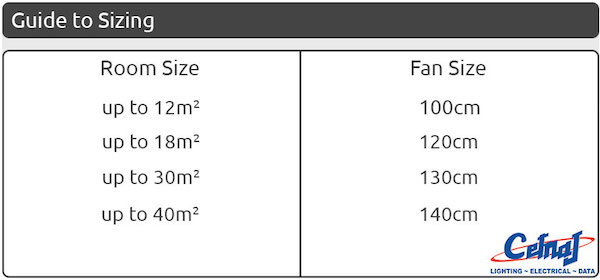Handy Hints and Tips for Buying and Using Ceiling Fans
Ceiling fans are an age-old feature of so many houses in Australia - and they're a must-have in this climate. Not only can a ceiling fan make your house livable during the summer months, they can reduce your energy bill in winter and make a stylish statement in your home.

As with any new accessory in your home, you’ve got to make sure it fits in, and matches the look and feel you’re going for. Picking the right size, shape, number of blades, material, colour - and every other variation you can think of - can be exhausting if you don’t know what you’re looking for. Read on to find some handy hints and tips for your next ceiling fan purchase.
The size of the room you plan on putting a ceiling fan in will determine how big a fan you will need. For smaller spaces, you obviously don’t need the biggest fan on the market, and for bigger rooms you will need something slightly more powerful to service the whole area - check out the table below for a guide to sizing.
You can choose whichever size you want, of course, but generally a too small fan will not service the area very well, and a too big fan will use far more energy than needed. Plus, a fan at the wrong size can make a room feel off-balance and odd.

The look of a ceiling fan varies across the materials used, the colour, and the number of blades.
The most common materials you can get are metal blades (stainless steel or aluminium), wooden blades, or plastic blades. When used indoors, any of these materials will work - though wood and plastic tend to be quieter than metal.
Your most common fan colours would be white, silver or stainless steel, black, or natural wood hues. That being said, you can get fans in nearly any colour you can think of.
The number of blades can vary between 1 and 7, or even more! The most common, however, are 3, 4, or 5 blade fans. Motor size, blade pitch and RPMs are all factors in regards to how efficiently your fan will operate. Just because a fan has more blades, doesn't mean it will move more air. It is ever so important to seek the right advice in regards to what fan will work best for the application you want to use it for.

TIP: Fans cool the people in a space, not the space itself, so leaving your fan on to “cool the room” when you aren’t in the room is pointless! Always turn off the fan when you leave, unless you’ll be back in a minute.
Ceiling fans are a great way to cool off in summer without making the power bills skyrocket. Used in conjunction with air conditioning, they allow you to put the temperature on the air con up so it isn't working as hard, then use the fan to blow the cooled air down onto you.
The same principle works in winter with your heater. You can turn the temperature down slightly, and use the fan to push the warm air back down from the ceiling - just make sure your fan is set to rotate the opposite way to summer. This is particularly good for houses with high ceilings, as hot air can get trapped up so high it doesn’t affect the people using the room at all.
Consider where the lighting in your room will come from - you can get ceiling fans with lights or without, so take that into account when buying the lighting and the ceiling fan for your room.
The recommended height for a ceiling fan is at least 2.1 metres from the floor, and at least 300mm from the ceiling. For those with high ceilings, you can get an extension rod so that the fan isn’t too high to work properly - the installing electrician can cut the rod to the right size for you. As long as the fan is a minimum of 2.1 metres from the floor, the lower it is hung will create more air movement - just take into account the tallest people that will be in your house!


